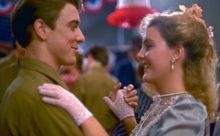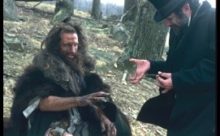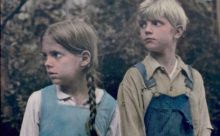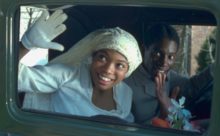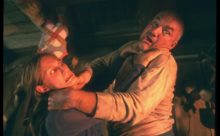From the Brothers Grimm, About Folktales
In our culture, folktales are often classified as “children’s stories.” But folktales have always been an important part of our universal heritage, and they are meant for everyone. It has even been said that the Grimms’ folktales rank next to the Bible or Shakespeare’s plays in importance. The brothers Jacob and Wilhelm Grimm first published Kinder und Hausmaerchen in German in two volumes between 1812 and 1815. Tales for Children and the Home subsequently went through seven editions in which the brothers added tales and made changes in the text of their original publication. They collected these tales from storytellers among ordinary people and from books. There is some disagreement about how much the Grimms reworked the tales. But in general, folklore scholars feel that their collection (more than 200 tales) faithfully retells the stories as they were handed down among the folk, even though the Grimms stylized them. Some of the videos in the From the Brothers Grimm series are based on tales collected by the Brothers Grimm. Others like Jack and the Dentist’s Daughter, Soldier Jack, Ashpet, and Mutzmag are American folktales that are related to ones in the Grimms’ collection.
DEFINITION
In English, the brothers’ collection is popularly known as Grimms Fairy Tales, but the title is misleading because few of the stories are about fairies. A more accurate description of these tales would be “Folktales” because these stories came from “the people” as a whole. They were told out loud over and over again, usually by older people who handed them down to younger generations. There are folktales all over the world; every culture has stories that its people repeat to each other in homes, villages, and towns. And because they were originally told out loud (transmitted orally), the Grimms’ tales and other folktales are different from stories “written” by one person.
The stories take place in a kind of never-never land where anything is possible. Humble heroes can kill giants and become kings, young people can be bewitched into animal shapes, and castles can vanish overnight or reappear in an instant.
INTERPRETATION
There is no single “right” interpretation of the tales. Folktales have been compared to many-faceted jewels, which show different meanings as they are turned this way and that. Each storyteller, in fact, will retell a folktale differently. A folktale can even change to become more “relevant” for a particular group in a particular time and place, but still keep its basic elements intact. In the end, the meaning of a folktale does not lie in the story itself, but in the minds of the audience. A tale may have different meanings for different people—and all of those meanings may be true. Because it is difficult to show complicated characters in a story that is told out loud, folktale characters tend to be one-dimensional types. Good characters are innocent and/or clever, while bad characters are bad. The important thing in a folktale is the clash of opposing forces, how they interact during the story. There is usually little need for dialogue. Through the growth and development of the main character, good almost always triumphs in a folktale. Justice is very predictable. The bad characters usually get exactly what they deserve—nothing more and nothing less.
“TYPES” AND “MOTIFS”
The fact that a whole society “creates” its folktales means that the symbols, characters and actions in the stories usually have a particular cultural significance. At the same time, the story “types” transcend political and ethnic boundaries. For example, there are hundreds of variations of the popular “Cinderella” tale found in cultures from China to America. Folktales have been classified into recurring types, or traditional plots. Within these plot types, many m o tif— the building blocks of plots— recur. An example of a common folktale type, or traditional plot, is the true prince or princess wrongly deprived of his or her station in life (as in “The Goose Girl”). Jack’s theft of the wedding ring and bedsheet in “Jack and the Dentist’s Daughter” is a motif found in other folktales where the hero’s ingenuity is tested. Many of the motifs found in folktales concern objects and events that appear to be charged with meaning even today, such as Rapunzel’s hair and its being cut off. These images come from the unconscious, like dreams. Modern audiences seem to recognize them intuitively, as if they already knew them. The character types, the motifs, the plot types—all these seem to present archetypes, emotionally realistic descriptions of universal human experiences. Folktales often seem to be about critical stages of life. Some people argue that helping children work through their conflicts is one of the folktale’s most important functions.
